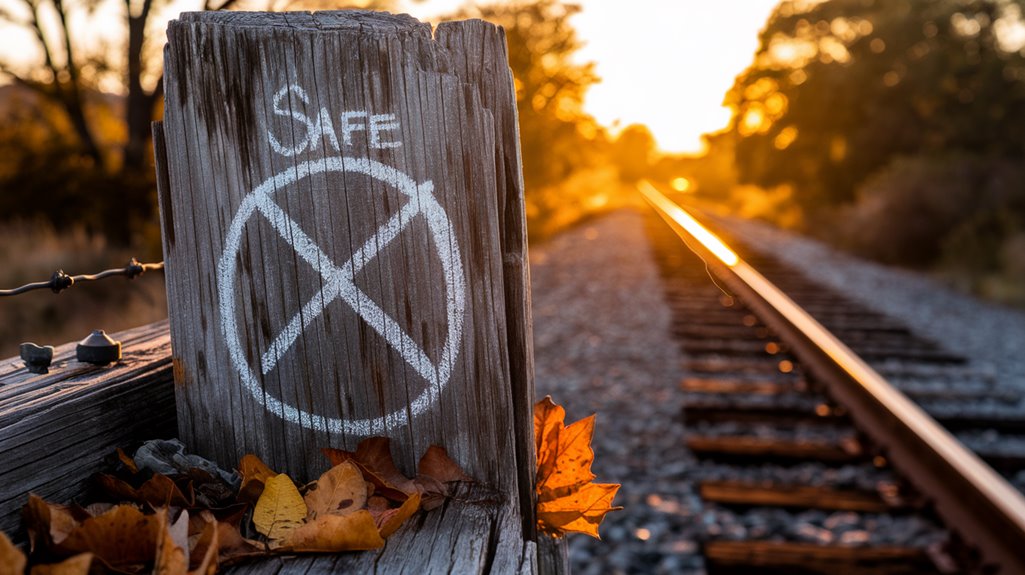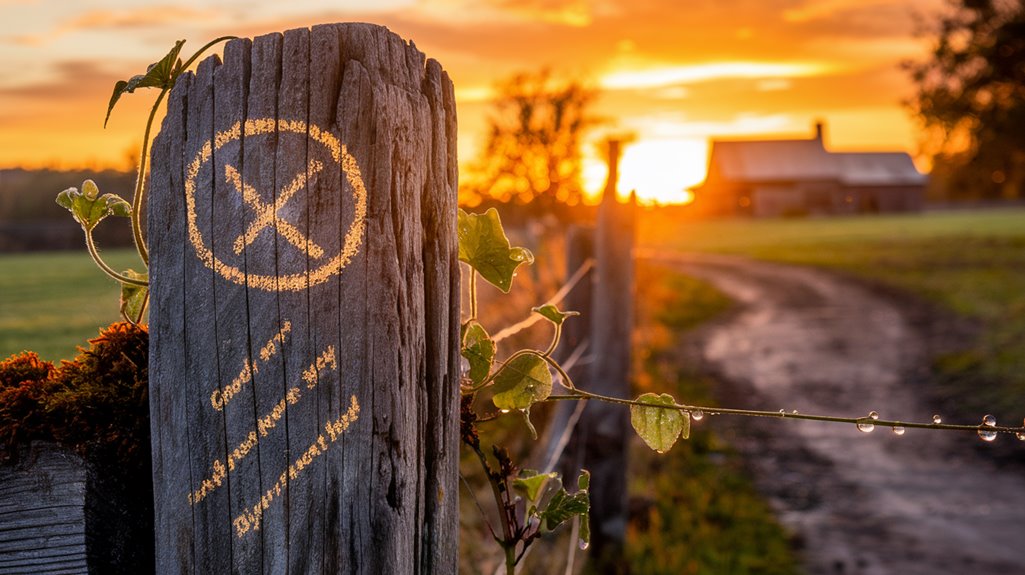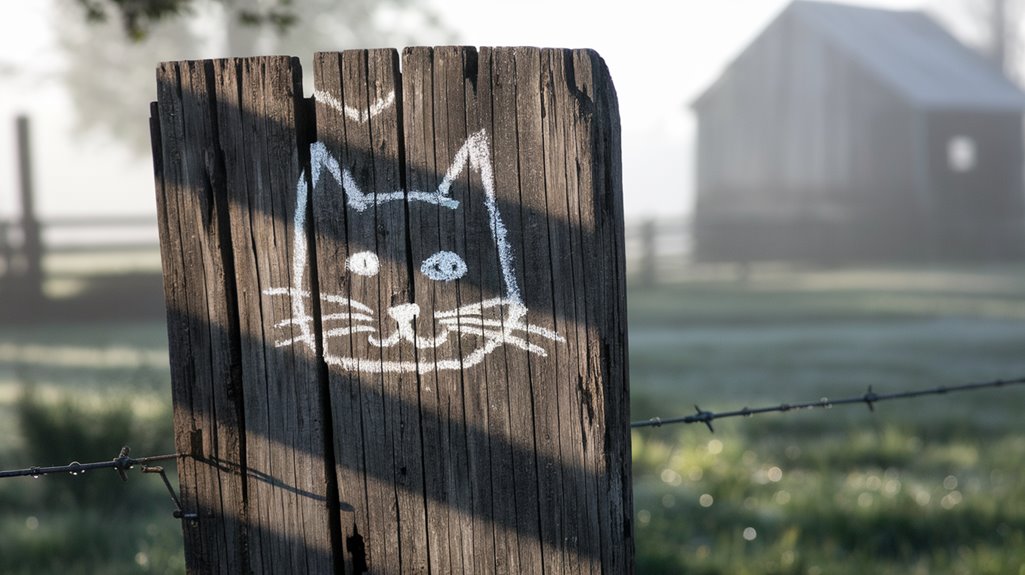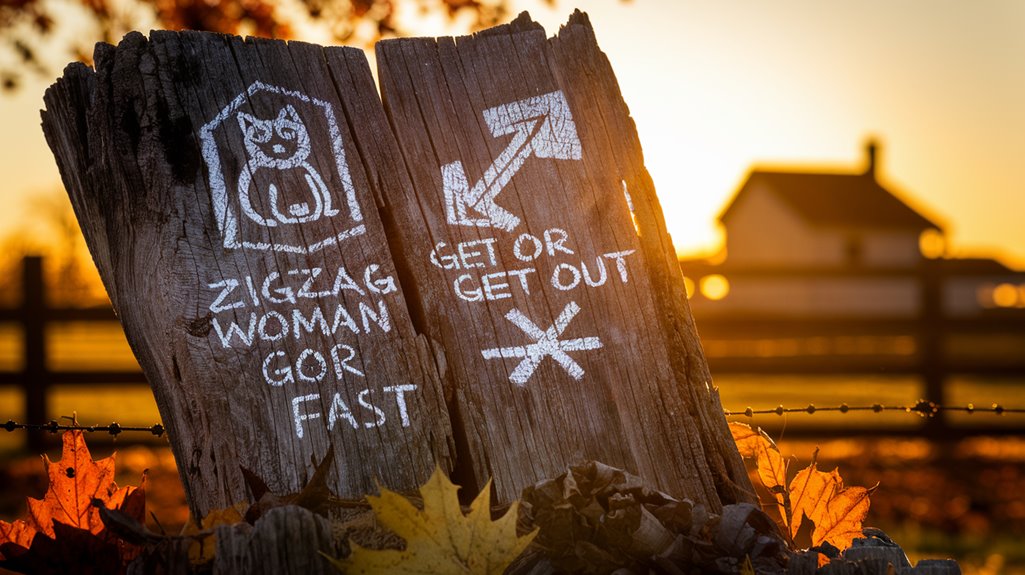Secret Hobo Code: Symbols That Could Save Your Life
You've likely walked past these cryptic symbols countless times without noticing their hidden meanings. During America's darkest economic period, a network of travelers developed an ingenious code that meant the difference between life and death on the railways. Through simple marks etched on walls, fences, and buildings, hobos warned each other of dangers, pointed to food and shelter, and created an underground support system. Let's explore how these mysterious symbols shaped survival during the Great Depression.
A Hidden Language of the Rails

In the early 1900s, more than half a million hobos roamed America's railways, developing a secret pictographic language to help them survive their nomadic lifestyle. This hidden system of communication became crucial to the hobo lifestyle, allowing travelers to share essential information about safe places, potential dangers, and available resources along their routes.
You'd find these mysterious symbols drawn in chalk, charcoal, or grease pencil on walls, fences, and buildings near railway lines. The code used simple geometric shapes like circles, arrows, and crosses to convey complex messages. A cross symbol would often indicate where hobos could find a church offering food or shelter. Leon Ray Livingston documented these codes extensively in his 1911 book "Hobo Campfire Tales."
While scholars debate how widely the system was actually used, with some suggesting word-of-mouth was more common, this symbolic communication represents the ingenuity of Depression-era travelers who needed to protect and support one another in challenging times.
Life-Saving Symbols Every Traveler Should Know
Life-saving symbols serve as a universal language across beaches, ships, and public spaces, protecting travelers through standardized visual communication. Understanding these symbols is fundamental for your travel safety, whether you're exploring coastlines or sailing the seas.
On beaches, you'll find color-coded flags indicating safe swimming zones: red and yellow for supervised areas, while red flags warn you to stay out of the water. Marine vessels must display IMO approved signs to identify all life-saving equipment locations.
Ships use standardized assembly station markers and directional arrows to guide you to safety equipment and muster points. Each lifeboat and liferaft location is clearly marked with identifying numbers or letters. The historical smiley face symbol indicated a safe place to sleep in a barn for weary travelers.
Even historical hobo symbols played an important role in symbol recognition, warning travelers about dangers and directing them to safe havens, food, and clean water.
These marks formed an essential safety network for railway wanderers.
Decoding Hobo Marks: From Safety to Danger
Through a complex network of cryptic markings, hobos during the Great Depression developed their own visual language to protect and guide fellow travelers.
As you explore hobo history, you'll discover these symbols meant the difference between safety and danger.
The symbol significance ranges from lifesaving warnings to helpful guidance. You'll find crosses indicating places offering food after religious talks, while triangles with hands warn of armed homeowners.
Looking for work? Watch for two crossed shovels. A cat symbol means you'll find a kind lady willing to help, while interlocked circles signal potential arrest. Recent research suggests that word of mouth was actually the primary way hobos shared information.
When you're traveling, remember that these marks weren't always consistent. They varied by region and time period, making interpretation challenging. An estimated 4 million adults left their homes searching for food and shelter during this era.
Today's modern hobos still use modified versions of this secret code.
The Great Depression's Secret Communication Network
While individual hobo symbols marked specific locations, they formed part of a broader underground communication system that emerged during America's darkest economic period. As bank failures and unemployment devastated the nation during the Great Depression, this network became essential to hobo survival strategies.
Much like the encrypted messaging network used in Operation Vula, these symbols allowed hobos to communicate securely and discreetly across vast distances. You'll find that hobo history reveals a sophisticated system born of necessity. Hobos weren't just wanderers; they were working nomads who developed their own culture and language.
Using simple pictographs, they'd warn each other about hostile locals, share tips about work opportunities, and identify safe places to rest. Unlike tramps or bums, hobos took pride in their willingness to work, and their code reflected this ethic. They would often perform odd jobs for meals in exchange for basic necessities.
Their network helped them navigate a harsh economic landscape while maintaining their dignity and independence.
Finding Shelter and Food Through Silent Messages

Simple yet sophisticated, the hobo code's pictographic language guided wandering workers to food and shelter during the Great Depression. You'd find shelter symbols etched in chalk, telling you whether a spot was safe for camping or had already been compromised. A square missing its top line meant safe haven, while an X through a house warned of previous tricks or dangers.
Food markings proved equally essential to survival. You could spot a cross indicating "angel food" after church services, or find four straight lines showing where you might work for a meal. Kind-hearted women were marked by three triangles, while a circle with an X promised a reliable handout.
These silent messages created a network of support, helping you navigate between generosity and danger in uncertain times.
Legacy of the American Hobo Code
These silent symbols carved by wandering workers left an enduring mark on American history that extends far beyond the Great Depression.
The ethical principles followed by these travelers made them a unique group, as they sought honest work while maintaining their independence. You'll find their legacy preserved at the annual National Hobo Convention in Britt, Iowa, where enthusiasts gather to celebrate hobo culture preservation and share stories of the rails. During the height of their era, over 250,000 teenagers rode the rails seeking work and survival. The ethical hobo principles, which distinguished them from mere vagrants, continue to inspire modern travelers and communities.
Today, you can see how their ingenious communication system has evolved into contemporary travel guides and review platforms.
Organizations like the Britt Hobo Museum work to protect this unique piece of American heritage, while figures like Texas Road Runner keep the tradition alive by documenting modern versions of these symbols.
The hobo code stands as a testimony to human resilience and the timeless desire to help fellow travelers.










